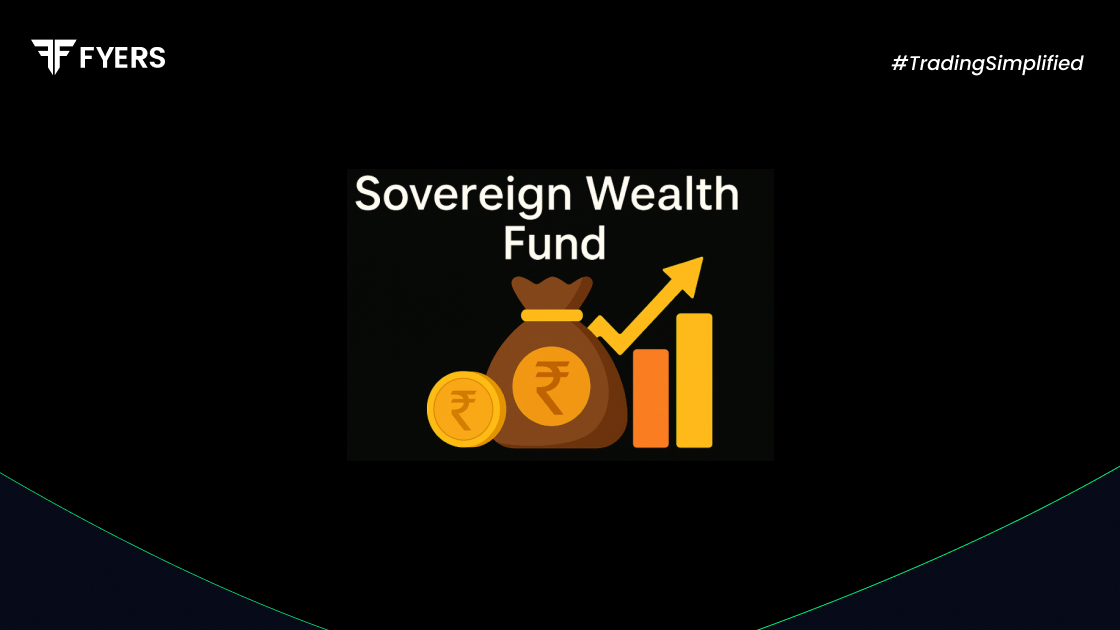

 30 Sep, 2025
30 Sep, 2025
 4 mins read
4 mins read

Every country dreams of financial security that stretches beyond today’s challenges. For some nations, that dream takes shape in the form of a sovereign wealth fund. These funds are not just giant pools of money but long-term strategies to preserve national wealth, reduce volatility, and invest in the future. From stabilising economies during downturns to building infrastructure and fuelling innovation, sovereign wealth funds have become a cornerstone of global finance.
The sovereign wealth fund meaning is straightforward. It is a state-owned investment fund created from a country’s surplus reserves. These reserves may come from natural resource revenues, trade surpluses, or budgetary savings.
Unlike central bank reserves that are held mainly for monetary policy or currency stability, SWFs are invested across a wide range of assets such as equities, bonds, infrastructure, and real estate. The purpose of a sovereign wealth fund is to diversify income sources, preserve wealth for future generations, and contribute to long-term national development.
The objectives of sovereign wealth funds vary by country, but common goals include:
Economic stabilisation: Acting as a buffer during oil price crashes, recessions, or global financial shocks.
Wealth preservation: Converting finite resources such as oil or gas into lasting financial capital.
Development support: Financing infrastructure, education, and technology to drive national growth.
Returns generation: Seeking diversified and sustainable returns over the long term.
Currency risk management: Reducing overreliance on domestic currency by holding global assets.
The first sovereign wealth fund dates back to 1953, when Kuwait established the Kuwait Investment Authority to manage surplus oil revenues. Over time, more countries recognised the need to transform short-term resource income into lasting financial security.
Initially, SWFs were mostly commodity-driven, but their role has expanded to include stabilisation, savings, and strategic development. Today, the largest sovereign wealth funds manage trillions of dollars, shaping markets and influencing global capital flows.
There are several types of sovereign wealth funds, classified by their purpose and funding source:
Stabilisation Funds – Cushion government budgets against volatile revenues, especially from natural resources. Example: Chile Economic and Social Stabilisation Fund.
Savings Funds – Preserve wealth for future generations by converting resource income into long-term investments. Example: Norway Government Pension Fund Global.
Reserve Investment Funds – Invest excess foreign exchange reserves for higher returns than traditional assets. Example: China Investment Corporation.
Strategic Development Funds – Channel capital into domestic projects such as infrastructure or innovation. Examples: Temasek Holdings (Singapore), India’s National Investment and Infrastructure Fund (NIIF).
|
Type |
Primary Objective |
Example |
|---|---|---|
|
Stabilisation Fund |
Reduce economic volatility |
Chile Economic and Social Fund |
|
Savings Fund |
Preserve wealth for the future |
Norway Government Pension Fund |
|
Reserve Investment |
Earn returns on surplus reserves |
China Investment Corporation |
|
Strategic Development |
Boost national development |
Temasek, NIIF |
The benefits of sovereign wealth funds extend well beyond financial returns:
Economic stability: Provide funds during recessions or fiscal deficits.
Diversification: Spread investments across multiple asset classes and geographies.
Wealth preservation: Turn temporary revenues into permanent capital pools.
Fiscal discipline: Ensure responsible use of windfall revenues.
Strategic advantage: Invest in sectors critical to national security and growth.
Social welfare: Some, like the Alaska Permanent Fund, directly benefit citizens through dividend payouts.
Several examples of sovereign wealth funds demonstrate their scale and impact:
Norway Government Pension Fund Global – The world’s largest SWF, managing over USD 1 trillion from oil revenues.
Abu Dhabi Investment Authority (ADIA) – A diversified fund established in 1976 to manage UAE’s oil wealth.
China Investment Corporation (CIC) – Created in 2007 to manage part of China’s foreign exchange reserves.
Kuwait Investment Authority (KIA) – The oldest SWF, established in 1953 to manage Kuwait’s surplus oil revenues.
Temasek Holdings (Singapore) – Focuses on strategic sectors such as financial services, energy, and technology.
India’s NIIF – Aims to attract foreign capital and invest in infrastructure development.
A sovereign wealth fund is more than just a financial instrument. It is a bridge between today’s resources and tomorrow’s prosperity. Whether it is Norway saving oil wealth for future generations, or India’s NIIF investing in infrastructure, each SWF tells a story of foresight and planning. By blending stability, savings, and strategy, these funds help nations withstand economic shocks and secure long-term growth. As global challenges intensify, sovereign wealth funds will remain crucial in shaping not just national economies but the broader world of international finance.
A sovereign wealth fund is state-owned and funded by national surpluses or resource revenues. A pension fund, by contrast, collects and invests contributions from workers and employers to pay retirement benefits.
They are typically funded through excess revenues from natural resources, trade surpluses, fiscal savings, or transfers from central bank reserves.
Key risks include political interference, lack of transparency, weak governance, and exposure to market volatility. Poorly managed SWFs can undermine financial stability instead of strengthening it.
Calculate your Net P&L after deducting all the charges like Tax, Brokerage, etc.
Find your required margin.
Calculate the average price you paid for a stock and determine your total cost.
Estimate your investment growth. Calculate potential returns on one-time investments.
Forecast your investment returns. Understand potential growth with regular contributions.